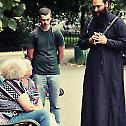Science
Hieromartyr Simeon the Bishop in Persia, and those with him in Persia
27. April 2018 - 13:37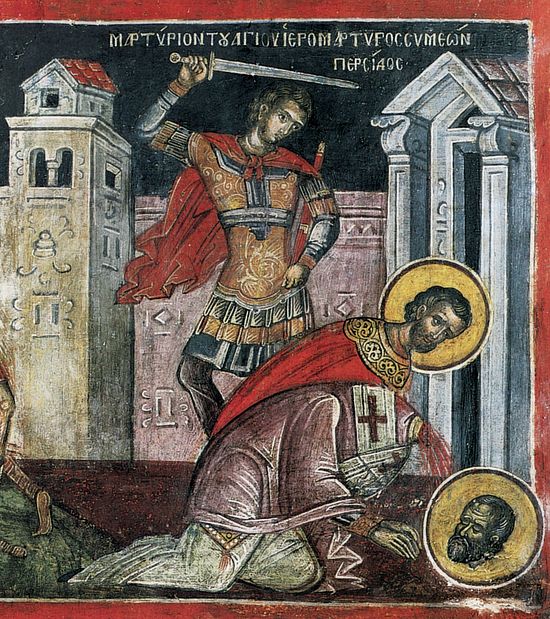 The Hieromartyr Simeon, Bishop of Persia, suffered during a persecution against Christians under the Persian emperor Sapor II (310-381). They accused the saint of collaborating with the Roman Empire and of subversive activities against the Persian emperor.
The Hieromartyr Simeon, Bishop of Persia, suffered during a persecution against Christians under the Persian emperor Sapor II (310-381). They accused the saint of collaborating with the Roman Empire and of subversive activities against the Persian emperor.
In the year 344, the emperor issued an edict which imposed a heavy tax upon Christians. When some of them refused to pay it, this was regarded as an act of rebellion, so the emperor began a fierce persecution against Christians.
Saint Simeon was brought to trial in iron fetters as a supposed enemy of the Persian realm, together with the two hieromartyrs Habdelai and Ananias. The holy bishop would not even bow to the emperor, who asked why he would not show him the proper respect. The saint answered, “Formerly, I bowed because of your rank, but now, when you ask me to renounce my God and abandon my faith, it is not proper for me to bow to you.”
The Church in Seventh Century Celtic Britain
26. April 2018 - 13:12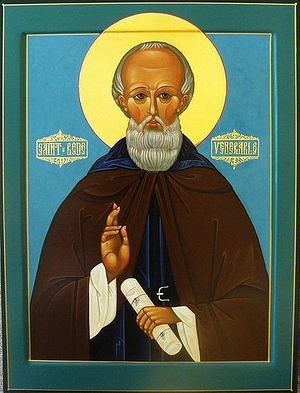 In the seventh century A.D., the population of Britain consisted mainly of two ethnic groups relatively equal in number, collectively known as the Celts and the Anglo-Saxons respectively. The Celts can be divided into three major sub-groups, namely the Welsh (the descendants of the Britons—the native inhabitants of Britain who were driven west by the invading Angles and Saxons) in Wales; the Picts (an indigenous tribal confederation of peoples in Scotland); and the Fenians, or Scots (a Gaelic people that migrated from Ireland to Scotland around the late fifth century)—this is how they were commonly called in Britain (“Scotti”, meaning “wanderers”, referred to the Irish in general). The name “Scotland” derives from the Latin “Scotia”—“the land of the Scots”. This is because in the middle ages, Scotland as a country was developed by the Scots rather than the native Picts.
In the seventh century A.D., the population of Britain consisted mainly of two ethnic groups relatively equal in number, collectively known as the Celts and the Anglo-Saxons respectively. The Celts can be divided into three major sub-groups, namely the Welsh (the descendants of the Britons—the native inhabitants of Britain who were driven west by the invading Angles and Saxons) in Wales; the Picts (an indigenous tribal confederation of peoples in Scotland); and the Fenians, or Scots (a Gaelic people that migrated from Ireland to Scotland around the late fifth century)—this is how they were commonly called in Britain (“Scotti”, meaning “wanderers”, referred to the Irish in general). The name “Scotland” derives from the Latin “Scotia”—“the land of the Scots”. This is because in the middle ages, Scotland as a country was developed by the Scots rather than the native Picts.
On the Shattering of Human Hopes
25. April 2018 - 10:20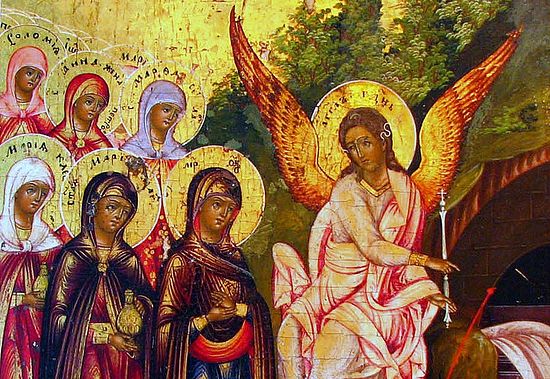 Sermon on the Third Sunday of Pascha, the Myrrh-bearing Women
Sermon on the Third Sunday of Pascha, the Myrrh-bearing Women
Christ is Risen! The worst thing that can happen in our lives is the loss of Christian hope. Not only hope, but specifically Christian hope. What can be worse than this? Hope… It was the expectation, the pledge of meaning, and the yearning for a happy future. Hope gave one the strength to live. It bore the foretaste of joy. And then—it all fell apart. Just a moment goes by and you understand that all has been irreparably lost. There can be no greater catastrophe in a person’s life.
Sunday of the Holy Myrrhbearing Women with the Noble Joseph
20. April 2018 - 15:03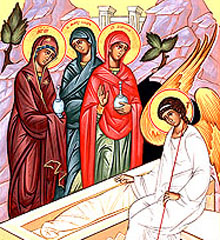 Today we commemorate the Holy Myrrh-bearing women Saints Mary Magdalene (July 22), Mary the wife of Clopas, Joanna (June 27), Salome, mother of the sons of Zebedee (August 3), Martha and Mary, sisters of Lazarus (June 4). Also Saint Joseph of Arimathea (July 31), and Nicodemus. The holy right-believing Queen Tamara of Georgia is commemorated twice during the year: on May 1, the day of her repose, and also on the Sunday of the Myrrh-Bearing Women.
Today we commemorate the Holy Myrrh-bearing women Saints Mary Magdalene (July 22), Mary the wife of Clopas, Joanna (June 27), Salome, mother of the sons of Zebedee (August 3), Martha and Mary, sisters of Lazarus (June 4). Also Saint Joseph of Arimathea (July 31), and Nicodemus. The holy right-believing Queen Tamara of Georgia is commemorated twice during the year: on May 1, the day of her repose, and also on the Sunday of the Myrrh-Bearing Women.
Synaxis of all Saints of Thessalonica. Saint Seraphim Bishop of Phanar (December 4, 1610), New Martyr Elias Ardunis (January 31, 1686), New Martyr Demetrius of the Peolponnesos (April 13, 1803).
The street mission of the Orthodox Brotherhood of St. Herman of Alaska
29. January 2018 - 13:49The Brotherhood of St. Herman of Alaska was established at the podvorye (dependency) of Valaam Monastery in Moscow in 2014 on the initiative of a group of parishioners to carry on missionary, educational and parish activities. The nucleus and initial team of the brotherhood were formed at the courses of the Missionary Center in honor of the martyred Fr. Daniel Sysoev. The Brotherhood’s confessor is Igumen Joseph (Kryukov), rector of the Moscow Church of Sts. Sergius and Herman of Valaam (the Dependency of Valaam Monastery). An important element of the activities of the Brotherhood members is street preaching.
Some five or seven years ago the words “street mission” provoked conflicting feelings among the Orthodox faithful. Some said with confusion, “Should we, Orthodox Christians, go out into streets and preach to strangers, like sects?”, whereas others argued, “We must witness to Christ by our lives and good deeds, while evangelism is a business of saints. As soon as you become a saint you will be able to reach out to people and ask questions about God.” But some time has passed, and today very few Orthodox people still ask themselves these questions. You can’t throw words out of the Gospel: Christ clearly calls upon all His followers to spread the Good News, Go ye therefore, and teach all nations (Mt. 28:19). And our tradition teaches us the same. According to His Holiness Patriarch Kirill, time is coming when the mission will become the main focus of the Church.
Malachi, the “Seal of the Prophets”
18. January 2018 - 12:51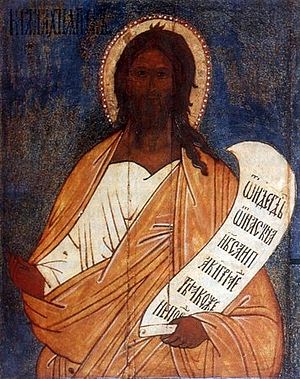 Malachi was the last of the Old Testament Prophets, which is why the holy fathers call him the “Seal of the prophets”. After him, until John the Forerunner whom he prophesized, for a whole 400 years there were no great prophets in the world.
Malachi was the last of the Old Testament Prophets, which is why the holy fathers call him the “Seal of the prophets”. After him, until John the Forerunner whom he prophesized, for a whole 400 years there were no great prophets in the world.
It is no coincidence that the Orthodox Church celebrates the memory of the prophet Malachi on January 3/16, three days before the Baptism of the Lord—the time of the appearance in the world of the great triumph and miracle: the Theophany of the Holy Trinity, so long awaited by the holy Patriarchs and prophets of the Old Testament world. The Church also honors by this John the Forerunner, who baptized the Savior of the world in the waters of the Jordan.

